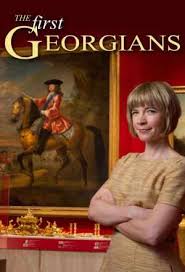Earth & Space | Crime | Environment | Health | History | Nature | Military | War | Politics | Science | Society | Technology | Truth Conspiracy
NEW DNA proof confirms Royal Family is German Bloodline Descendant
Although the Queen is descended from the Hanoverian kings, imported 300 years ago when the Stuart line failed with the death of the childless Queen Anne in 1714 and the Act of Settlement ensured that only Protestants could take the throne, the blood lines are entangled
In 1714, to prevent the crown falling into the hands of a Catholic, Britain shipped in a ready-made royal family from the small German state of Hanover.
100 years ago the Royal Family changed there name to Windsor to hide there German name/heritage.
Britain's Queen Elizabeth II 63 years, the longest-ruling monarchy with German Blood DNA.
Queen Victoria, daughter of Prince Edward, Duke of Kent and Strathearn son of George III ( who was grandson of George II born on 1 February 1707 in Hanover, Germany).
Queen Victoria married to Prince Albert of (German) Saxon duchy of Saxe-Coburg-Saalfeld
ALL GERMAN due to the act of settlement
A recent discovery in August 2012, of King Richard III dead body, was found under a car park in Leicester. The search was initiated by the Looking for Richard project with the support of the Richard III Society.
He was the last English king of the House of York and the last of the Plantagenet dynasty, who was killed in battle of the Wars of the Roses in 1485.
Preliminary DNA analysis showed that mitochondrial DNA extracted from the bones matched that of two matrilineal descendants, one 17th-generation and the other 19th-generation, of Richard's sister Anne of York.
The DNA confirmed that the current royal Dynasty does not have a British royal bloodline, and that Queen Elizabeth II did not descended from previous Tudor or Plantagenet kings and queens.
So where did the current British queen come from?
She was born in London, served as a mechanic in the war and prefers dogs to humans. How much more British could Her Majesty be?
The obvious place to start is the family tree, although unfolding it is enough to make even the most seasoned genealogist reach for a stiff drink. Yet what comes across very clearly — and very quickly — is that there is a lot of German in it.
There is no real starting point, but we may as well begin with 1714. At the age of 54, after the death of Queen Anne died, and her direct Stuart line came to an end.
Although over fifty Roman Catholics bore closer blood relationships to Anne, the Act of Settlement 1701 prohibited Catholics from inheriting the British throne; George was Anne's closest living Protestant relative.
They were passed over, and in the end Georg Ludwig, the Protestant Prince Elector of Hanover, our royal house changed from Stuart to Brunswick-Luneburg-Hanover, bringing with it a wealth of connections to the ancient royal houses of Welf and Este.
Until recently, members of the Royal Family had no surname. They customarily used first names and the name of their house, which was inherited from the father (Richard the Lionheart was a Plantagenet, Henry VIII was a Tudor, George I was a Hanover).
Accordingly, the House of Hanover ended with Queen Victoria, and her descendants took the dynastic name of her husband, Prince Albert, which was also German: Saxe-Coburg-Gotha.
How German is the Queen?
House of Saxe-Coburg and Gotha is a German dynasty, the line of the Saxon House of Wettin that ruled the Ernestine duchies including the duchy of Saxe-Coburg and Gotha.
Later, as a result of the First World War (1914–18), the empires of his first cousins Tsar Nicholas II of Russia and Kaiser Wilhelm II of Germany fell while the British Empire expanded to its greatest effective extent.
In 1917, the House of Windsor, was founded by King George V by royal proclamation. George became the first monarch of the House of Windsor, when he renamed the British Royal Family from the House of Saxe-Coburg and Gotha as a result of anti-German public sentiment in the British Empire during World War I.
After the war, Philip was granted permission by George VI to marry Elizabeth in 1947. Prince Philip of Greece and Denmark, took British citizenship and became a naturalised British subject, adopting the surname Mountbatten from his maternal Grandparents.
This "hidden surname" derives from the German town of Battenberg, in Hesse. Prince Louis of Battenberg Anglicised his surname to Mountbatten (its literal English translation) during the First World War at the request of King George V.
Just before the wedding, the King granted him the style of "His Royal Highness" and the title Duke of Edinburgh. His wife made him a prince of the United Kingdom in 1957.
Through a British Order in Council issued in 1960, descendants of Philip Duke of Edinburgh and Queen Elizabeth II can use the surname of Mountbatten-Windsor, and is the personal surname of some of their descendants.
The word “English” is derived from the Angles, of Anglo-Saxon fame. In AD 410, a range of German, Danish, and Dutch tribes that we sloppily call the Anglo-Saxons moved in from across the Whale Road. Not forgetting the Vikings either, who brought Danish, Norwegian, and Swedish blood to swathes of Britain. So, to be honest, is to acknowledge that this country has had the most profound and close genetic and cultural ties with the people of Germany and Scandinavia for over 1,500 years.


Welcome to Documentary Videos World!
Thanks for stopping by. We welcome your comments.
